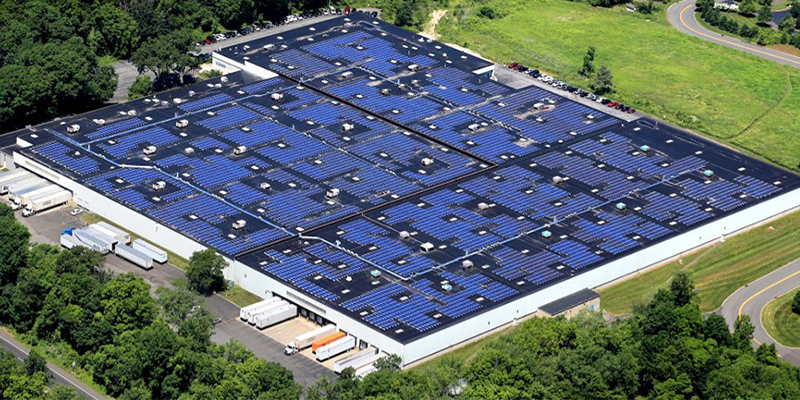Environmental, Social, and Governance mandates (ESG) are becoming a reality not only in large enterprise businesses but also in their entire supply chains. Forces from upstream as well as downstream, combined with pressure from stockholders, stakeholders, employees and customers, are ushering in a new era where ESG practices are no longer considered optional.
At NAIOP’s I.CON West: The Industrial Conference this week in Long Beach, California, Alexander Hancock, vice president, clean energy finance, Nuveen Green Capital, and John Lind, managing director of business development, Safari Energy LLC, shared their insights, focusing specifically on the environmental aspect of ESG.
For asset managers or owners looking to add value to their buildings, both Lind and Hancock said that there is tremendous opportunity in solar. Why solar? “Solar tends to be the most tangible, most visible, most easily measured in this ESG pie,” said Lind.
There’s still a long way to go: According to McKinsey, approximately 70% of commercial real estate has the capability to go solar, but there’s only a 3% penetration rate.
Hancock shared a case study for a project that was financed with a C-PACE loan, which provides commercial property owners low-cost, long-term financing for energy efficiency and renewable energy projects. The project, 195 13th Ave. in Ronkonkoma, New York, is an owner-occupied light industrial building. The solar system that was incorporated into the building’s roof resulted in first-year savings of over $700,000, and the anticipated savings over the project’s life is over $5.6 million.
“The owner retained ownership of the [solar] system, so they can monetize the tax benefits and take advantage of accelerated depreciation,” said Hancock. “They are selling power to the local community solar program and have turned their roof into a revenue stream.”
A lot of municipalities also look kindly on new construction permits which include solar or other sustainability technologies, Lind said, “and that’s just one of the many other ancillary benefits of implementing these technologies.”
While solar incentives exist in several states today, those incentives may soon phase out and become mandates.
“I think looking forward, there is a risk to not including capital for solar in your project,” said Hancock, “and it’s much more expensive to add solar to a building retroactively.”
There are various opportunities for financing available, however, he added. “Don’t let the capital gap be what prevents you from implementing solar.”
“Solar is good for the planet, good for your wallet, but it also a proven way to add value for your property,” said Lind.
Featured photo courtesy of Safari Energy.
This post is brought to you by JLL, the social media and conference blog sponsor of NAIOP’s I.CON West 2022. Learn more about JLL at www.us.jll.com or www.jll.ca.









